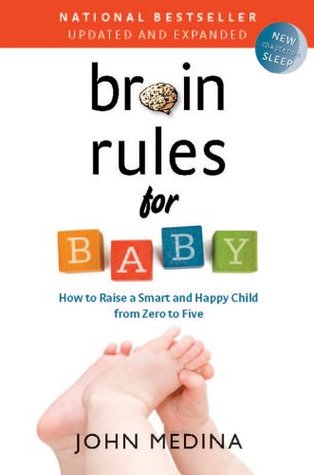More on this book
Community
Kindle Notes & Highlights
by
John Medina
Started reading
May 22, 2025
What helps early learning: breast-feeding, talking to your children—a lot, guided play every day, and praising effort rather than intelligence.
“The only thing that really matters in life [is] your relationships to other people.”
The more intimate the relationship, the better. A colleague of Vaillant’s showed that people don’t gain access to the top 10 percent of the happiness pile unless they are involved in a romantic relationship of some kind.
Marriage is a big factor. About 40 percent of married adults describe themselves as “very happy,” whereas 23 percent of the never-marrieds do.
other behaviors that predict happiness include:
• a steady dose of altruistic acts
making lists of things for which you are grateful, which generates feelings of happiness in the short term
cultivating a general “attitude of gratitude,” which generates feelings of happiness in the long term
sharing novel experiences with a loved one
deploying a ready “forgiveness reflex” when loved ones slight you
Helping your child make friends
You will need to teach your children how to socialize effectively
They are also two of the most predictive for social competency: • emotional regulation • our old friend, empathy
Emotional regulation: How nice
Big feelings are confusing for little kids
infants will not grow up to be exuberant, outgoing, bubbly, or bold.
As these highly reactive children navigated through school, Kagan noticed, most were academically successful, even if they were a bucket of nerves. They made lots of friends. They were less likely to experiment with drugs, get pregnant, or drive recklessly. We think that’s because of an anxiety-driven need to acquire compensatory mechanisms.
If children have a variation of this gene called DRD4-7, this insecurity never develops.
The gene 5-HTT,
comes in two forms, which I’ll term “long” and “short” variants. If you have the long form of this gene, you are in good shape. Your stress reactions, depending upon the severity and duration of the trauma, are in the “typical” range.
Tendencies, not destinies
Some of these DNA-based findings require much more research to tie up important loose ends before we can label them as true.
Labeling emotions calms big feelings
How Rachel responds to Tyler’s intense emotions profoundly matters to his future happiness. In fact, her response is one of the greatest predictors of how he will turn out as a young man.
Attentive, patient interactivity actually helps your baby’s neural architecture develop in a positive way,
Knowing what your kids tag—what things they have an emotional reaction to—and then responding to that knowledge in specific ways is not only part of the attachment process, but one of the big secrets to raising happy kids.
parents who end up with great kids do similar kinds of things over and over again.
Emotions must be central
your ability to detect, react to, promote, and provide instruction about emotional regulation—has the greatest predictive power over your baby’s future happiness.
• a demanding but warm parenting style • comfort with your own emotions • tracking your child’s emotions • verbalizing emotions • running toward emotions • two tons of empathy
A demanding but warm parenting style
Baumrind described two dimensions in parenting,
Responsiveness. This is the degree to which parents respond to their kids with support, warmth, and acceptance.
Demandingness. This is the degree to which a parent attempts to exert behavioral control.
Only one style produces happy children.
Authoritative: Just right Responsive plus demanding. The best of the lot. These parents are demanding, but they care a great deal about their kids. They explain their rules and encourage their children to state their reactions to them. They encourage high levels of independence, yet see that children comply with family values. These parents tend to have terrific communication skills with their children.
2. Comfort with your own emotions
how you feel about feelings can profoundly influence your child’s future happiness. You have to be comfortable with your emotions in order to make your kids comfortable with theirs.
Parents with the happiest kids
kept track of their children’s emotions the way some people keep track of their stock portfolios or favorite baseball team. They did not pay attention in a controlling, insecure style but in a loving, unobtrusive way,
when parents paid too much attention to their kids’ cues—responding to every gurgle, burp, and cough—the kids became less securely attached.
Research shows that this labeling habit is a dominant behavior for all parents who raise happy children.
Labeling emotions is neurologically calming
children will experience the physiological characteristics of emotional responses before they know what those responses are.
Researchers believe that learning to label emotions provides the linkage. The earlier this bridge gets constructed, the more likely you are to see self-soothing behaviors, along with a large raft of other benefits.
What if you’re not used to examining emotions? You may need to practice labeling your own emotions out loud.
What’s key is that:
you can identify the emotion quickly and can verbalize it on demand. • you can recognize that same emotion in other people just as quickly.
Researchers in the Chicago area showed that musically experienced kids—those who studied any instrument for at least 10 years, starting before age 7—responded with greased-lightning speed to subtle variations in emotion-laden cues, such as a baby’s cry.
do not judge emotions.


